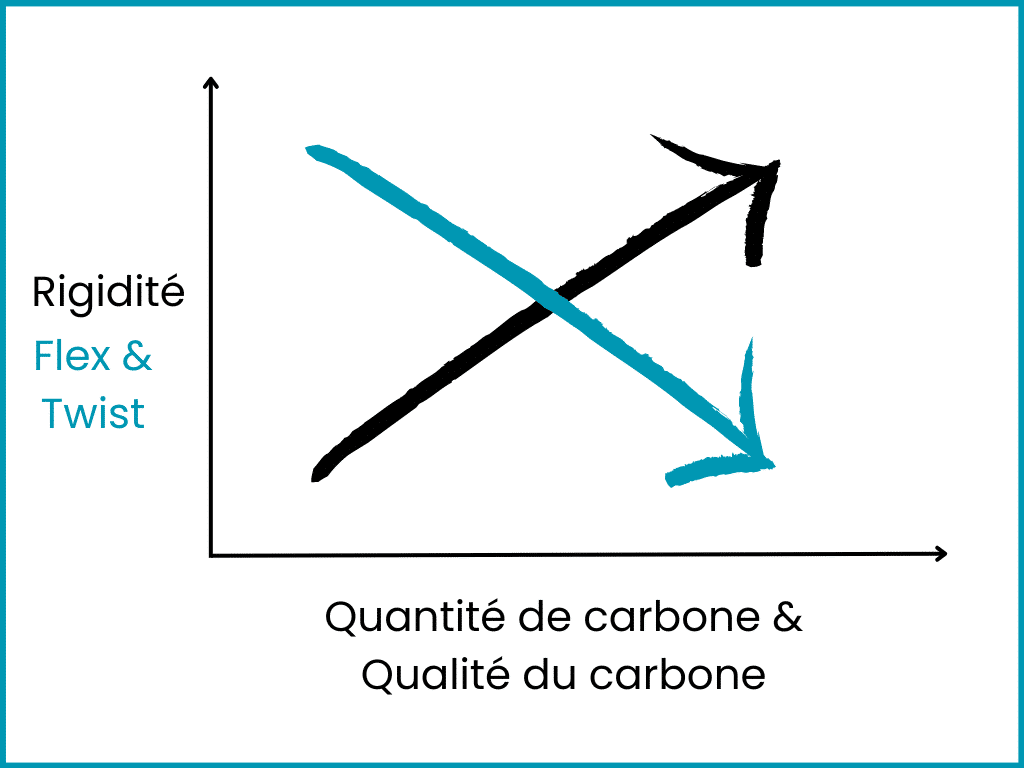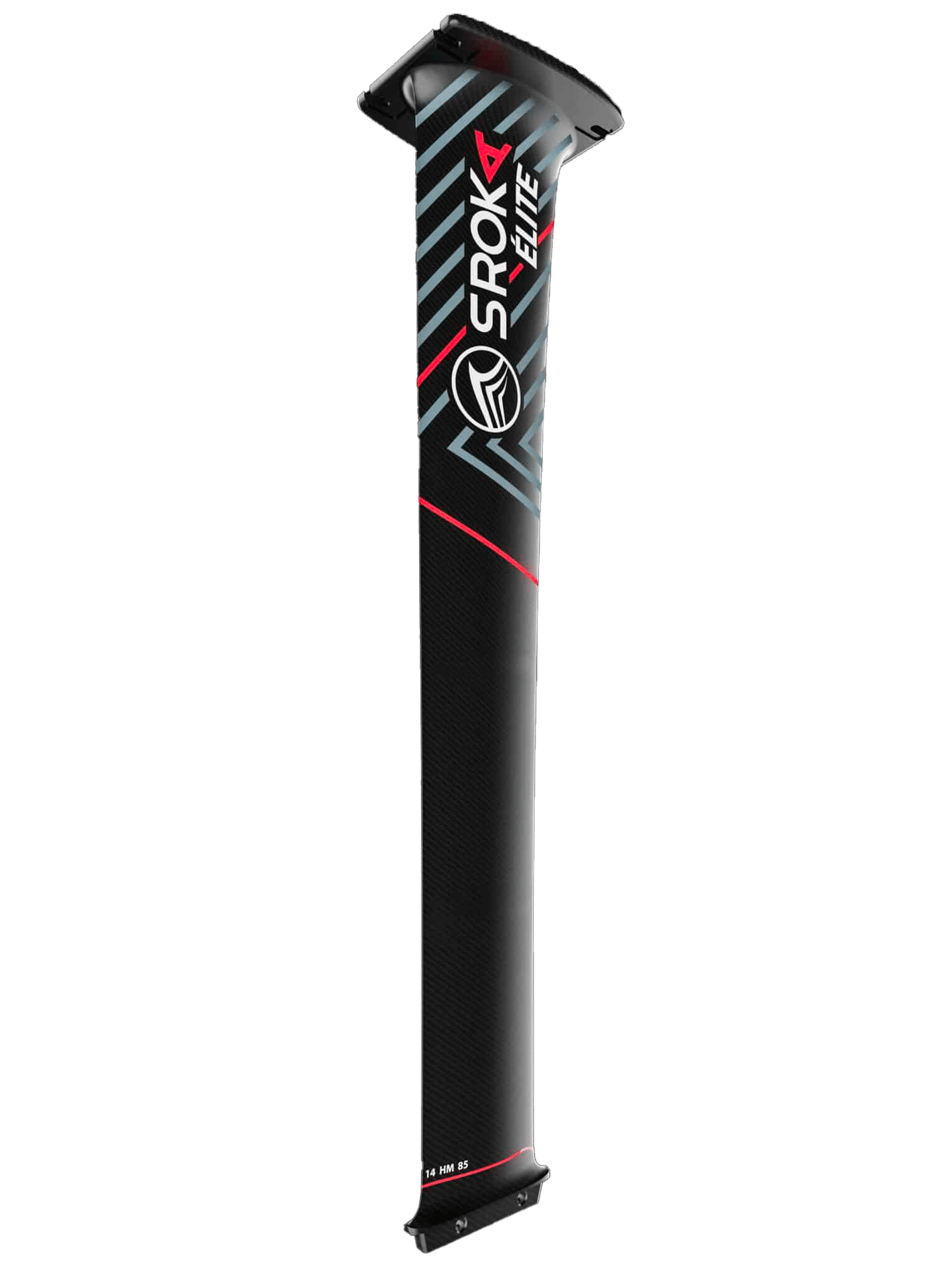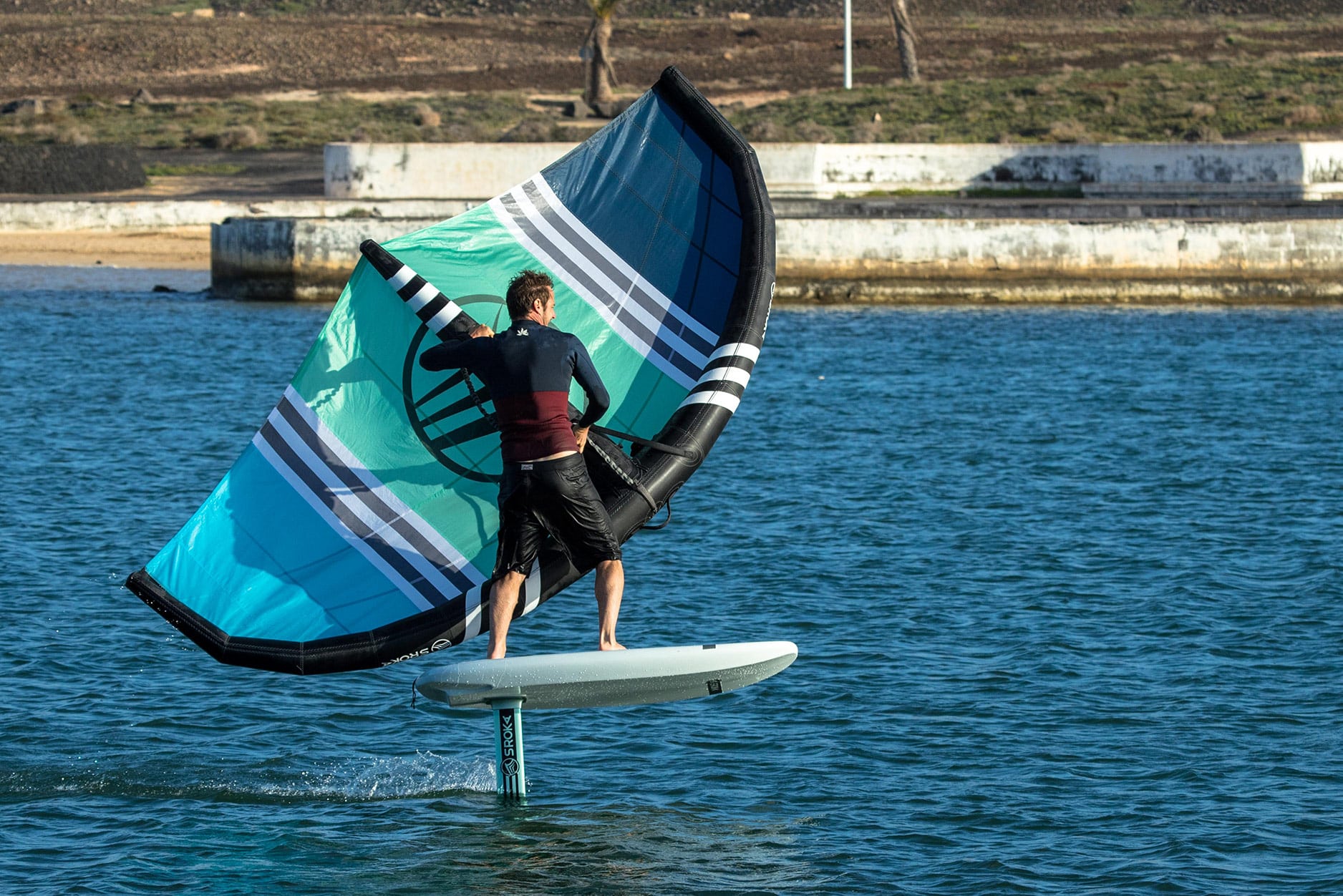Andalusia, a sunny region in the south of Spain, is a true paradise for water sports enthusiasts, especially wing foil. With its vast and diverse …
What are the advantages of a carbon foil?
The discipline of foiling has grown tremendously in recent years, especially with the emergence of wing foiling, which allows you to glide across the water using a kite and a foil.
The foil consists of a mast, a fuselage and two fins: a load-bearing front fin and a rear fin to stabilize the whole.
There are different types of foils, depending on the materials used, such as aluminum or carbon.
In this article, we’ll take a look at the benefits of carbon foiling, while debunking some common misconceptions, including those that claim carbon foils are consistently better and lighter than their aluminum counterparts.
Is the carbon foil really more efficient than an aluminum foil?
1. Stiffness and performance, yes but no.
Firstly, a carbon mast is not necessarily steeper than an aluminium mast. If, on a mast that is 16mm thick, there is only 2mm of carbon then it will not be stiffer than an aluminium mast and above all it will be less solid.
The advantage of a carbon mast is to be able to reduce drag as much as possible while being rigid in bending and torsion.
To do this, you need to increase the amount of carbon, increase the quality of the carbon fibers, and have a consistent and relevant draping plan.

This is not the case for all carbon masts. One of the big advantages of having a carbon foil is to reduce drag as much as possible with the maximum possible stiffness/ This brings stability, better acceleration and better handling. Performance are significantly higher.
If the carbon foil is well constructed, it brings a feeling of nervousness, reactivity, control and glide.
For example, let’s make a comparison of carbon foil and aluminum foil. Identical thickness and rope (11mm rope, and 14mm thick). The aluminum mast is softer and twists when sailing, which created lag times, loss of nervousness, glide and/or control. That’s why we thicken the aluminium masts.
The carbon foil, on the other hand, will bring increased responsiveness and responsiveness if, and only if, the quality of the carbon fibers is increased and the quantity of carbon is also increased.
If there is deformation under the stress of a large force, the carbon will return to its original position more quickly. The carbon foil will then provide precision on the downforce and finer control when sailing.
2. Lightness, yes but no.
The density of a carbon part is 1.80 g/ml, while that of aluminum is 2.7 g/ml. So on paper, carbon looks a lot lighter. However, if you want an ultra-stiff carbon foil, you have to increase the amount of carbon.
If we produce a solid carbon mast, then it will not be much lighter than a hollow aluminum mast. On the other hand, the carbon mast will be much thinner (14mm vs. 18’5mm for aluminum) with less rope. You will gain about 200-300 g for the same size.
However, if you thicken the carbon mast and put foam inside, you can save between 500 and 900 g per pole. In this case, it can be said that the carbon mast is lighter.

3. Durability and Versatility
Sustainability is added to the many benefits of carbon foiling. Damaging your kite because of a stone or having scratches that appear as a result of friction can happen.
The advantage of a carbon foil is that it can be easily repaired by sanding it down and adding carbon. However, it is not recyclable, unlike aluminum. It is therefore necessary to choose your carbon foil carefully to have the maximum stiffness, finesse and so that it is the most durable over time and that it can accompany you in your practice and your progress.
Another advantage of carbon is that it resists corrosion and wear well, unlike aluminum which can prick or crack over time. Carbon is therefore a non-recyclable but sustainable material that guarantees you optimal use for several years if you are careful.

4. A few tips.
- To maximize the durability of your foil, avoid all friction with sand or pebbles and avoid resting your board on the rail with the foil resting on the ground on one side. Doing so may damage the fins and lose efficiency.
- Protect your mast in a mast cover to avoid any shocks.
- It is advisable not to leave a carbon foil in direct sunlight. Epoxy resins cure from 65-70 degrees (typically, sometimes even earlier). A foil in direct sunlight with high temperatures can easily exceed 80 degrees. As a result, the resins soften and if you use your foil immediately, you risk weakening the whole thing. It is therefore recommended to let the foil cool down before going back into the water.
- The same applies if your foil has been in your car for a long time with high heat.
- Remember that even if your foil is well built, a foil is an underwater plane. Any contact with an obstacle will damage it.
- Rinse it from time to time and in case you use it very frequently, check it regularly from all angles.
In Conclusion
In conclusion, using a carbon foil has many advantages over aluminum. Carbon offers stiffness (if you use high modulus fibers), lightness, durability and incomparable versatility, which will allow you to fully enjoy the gliding sensation offered by the foil.
If you want to
invest in a carbon foil
, invest in a very good and quality carbon mast. It will certainly cost you a little more, but it will prevent you from buying another one 1 or 2 years later. We advise you to discover our Sroka Elite Carbon range, which offers a 100% high modulus M40J foil, with a thin mast (14mm thick with 10.9cm of rope) and efficient.
If absolute performance doesn’t appeal to you, take a look at the SOLO 16mm thick carbon foil . It will bring you lightness, rigidity at a more measured price.
Finally, we go the range of our Alu foils which are very efficient with the simplicity of an aluminum foil.
Do not hesitate to contact us for more information about Carbon Foils.
If you still have questions about this, or for any other request, please do not hesitate to contact us !
Article you may be interested in
The 360 wing foil is a maneuver that allows you to start freestyle flat on the water. This trick, which involves making a complete turn …
Mauritius, known for its white sandy beaches and crystal clear waters, is a dream destination for water sports enthusiasts. Among the popular activities that attract …
Wingfoiling is an emerging water sport that is gaining popularity due to its high accessibility. Whether you are young or old, wingfoiling is an activity …





